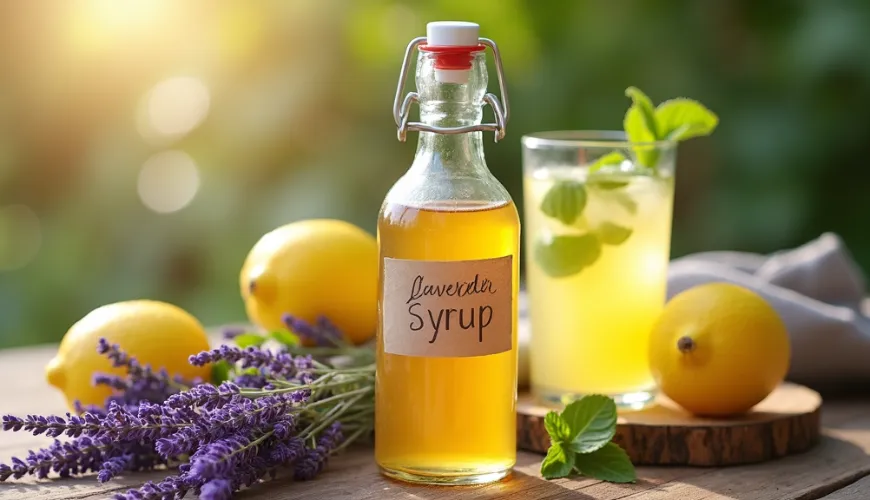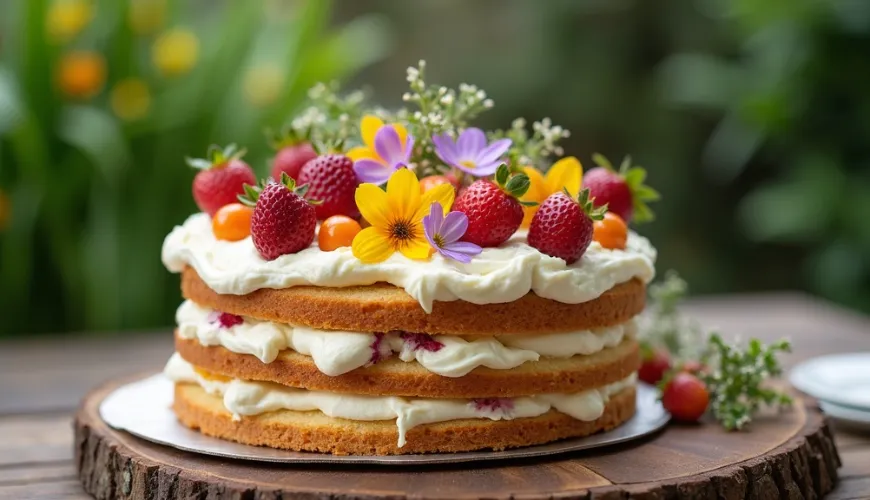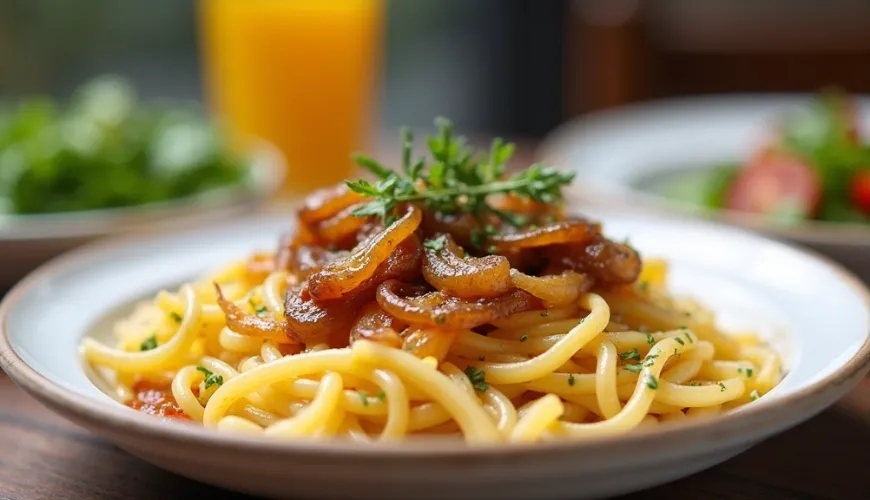
Lavender Syrup Recipe That Will Delight Your Senses

The Magic of Lavender in a Jar - How to Make Homemade Lavender Syrup
The scent of summer, tranquil evenings in the garden, and the buzzing of bees among the purple stalks – this is the atmosphere captured by lavender syrup. This delicately aromatic drink, which you can easily prepare at home, has become popular in recent years not only among herb enthusiasts but also among gourmets who enjoy discovering unconventional flavors. The recipe for lavender syrup is not complicated, and the result is a fragrant treasure that you will appreciate not only in summer lemonades but also in desserts, tea, or even cocktails.
Lavender is not just a fragrant decoration for a closet. This Mediterranean herb has a long history in both medicine and gastronomy. It is known for its calming effects, helping with insomnia, anxiety, and headaches. In the kitchen, it has been used since ancient times – the Romans added it to wines, meads, and pastries. In modern times, it is primarily used in combination with citrus, honey, or vanilla. And lavender syrup is one of the simplest ways to bring the scent of Provence into your home.
The Best Recipe for Lavender Syrup - What You Will Need
There are many variations on how to make lavender syrup at home, but the foundation of every recipe consists of three things: lavender flowers, sugar, and water. It depends on whether you want a milder or more intense syrup, sweeter or with a sour undertone. Some recipes use lemon juice or citric acid not only for flavor but also as a natural preservative.
The absolute classic is the basic recipe for lavender syrup, which has proven itself even in households that prefer a natural and minimalist approach:
Ingredients:
- 3 handfuls of fresh lavender flowers (or 1 handful of dried)
- 1 liter of water
- 1 kg of cane sugar
- juice from 1 lemon (can be replaced with 1 tablespoon of citric acid)
You might be thinking – really that much sugar? Yes, in this recipe, sugar not only serves as a sweetener but also as a preservative. However, if you want a healthier version of lavender syrup, you can replace part of the sugar with honey or use coconut sugar, although this will affect the color and taste.
Step-by-Step Process
Pour water into a pot, add the lavender flowers, and bring to a boil. Let it simmer gently for about 10 minutes, then remove the pot from the heat and let the infusion steep for at least 2 hours – the longer, the more intense the syrup will be. Some people let it steep overnight, similar to cold tea.
After steeping, strain the infusion through a fine sieve or cloth, add sugar and lemon juice, and heat again until the sugar is completely dissolved. Let it briefly come to a boil, then pour the hot syrup into sterilized bottles. Once cooled, store in the refrigerator or a cool pantry.
And how do you know you have the best lavender syrup? It should be clear to lightly amber, with a subtle floral fragrance and taste that is harmonious – not too soapy, nor overly sweet. If you like to experiment, you can add a sprig of vanilla, a few basil leaves, or orange peel to the syrup. Each variation will add a new dimension to the result.
Inspiration from the Everyday Kitchen - How to Use the Syrup
While in some households, the recipe for homemade lavender syrup is a family treasure, elsewhere it's a novelty that needs to be incorporated into the routine. There are many ways to use the syrup. It is invaluable, especially on hot days – just mix it with sparkling water, add a slice of lemon and a few mint leaves, and you have a refreshing lemonade just like from a café.
Lavender syrup is also great for the winter months – in hot tea or homemade punch, it adds a touch of elegance to the drink. You can also use it in baking – for example, to drizzle over a cake, to flavor muffins, or to make lavender icing. For coffee lovers, a drop of syrup in a latte or cappuccino is an interesting option – creating an aromatic drink reminiscent of Parisian cafes.
One of our readers shared a tip that she uses lavender syrup as a natural sweetener in yogurt for her children, as it has a less intense flavor than honey and also smells wonderful. Another mother recommends adding a bit of syrup to bathwater – for a gentle aromatherapy experience before bed.
Homemade Versus Store-Bought - Why It's Worth Making the Syrup Yourself
Today, there are many ready-made lavender syrups on the market, but not all are of good quality. Many contain artificial colorings, flavorings, or large amounts of glucose syrups. However, if you make homemade lavender syrup, you know exactly what's in it. You can adjust the sugar ratio, choose organic flowers from your garden, and tailor the flavor to your taste.
Moreover, homemade syrup makes a great gift. With a little creativity, a nice bottle, and a handwritten label, you create a personal gift that has soul. Whether you give it to a friend, grandma, or a teacher at the end of the school year, it will always be appreciated.
In this context, let's quote the words of British herbalist Julie Bruton-Seal: “Herbs are not just medicinal – they are also beautiful, tasty, and can bring joy every day." Lavender is an example of this.
Tips for Growing Lavender at Home
Perhaps the recipe for lavender syrup has inspired you so much that you're wondering if you can grow lavender yourself. The good news is that this easy-care plant is well-suited for Czech gardens and pots. It only needs plenty of sun and well-drained soil. Ideally, plant it in the spring, and when it blooms – usually in June to July – cut the flowers and dry them in an airy, shaded place.
Lavender lasts for many years and, besides its use in the kitchen, you can dry it for scented sachets, use it in homemade cosmetics, or as a natural moth repellent. It's a versatile herb that fits into every sustainable household.
If you don't have a garden, don't worry. There are varieties suitable for containers – such as Lavandula angustifolia ‘Hidcote' – that will grow even on a balcony. You can also choose organic flowers from trusted growers or in organic shops.
Lavender syrup is more than just a sweetener – it's a way to preserve the scent of summer, care for your senses, and support a simple, healthier, and more sustainable lifestyle. Whether you use it in the kitchen, bathroom, or as a gift, it will always carry a touch of nature and the calm we so need today.

